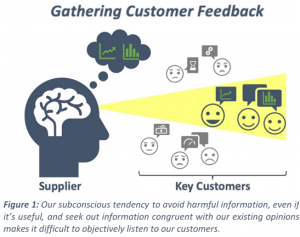
Research shows that fake news headlines fool Americans 75% of the time, potentially influencing the opinions and beliefs of more than 200 million people.[2]
“Fake” news has become a “real” problem in the US.
A 2016 study at MIT identified 126,000 tweets linked to “fake” news stories,[1] and their impact is hardly trivial. Research shows that fake news headlines fool Americans 75% of the time, potentially influencing the opinions and beliefs of more than 200 million people.[2]
But how can this be happening? With the wealth of digital information available at our fingertips, one would think more than 25% of us have the ability to fact-check, debunk, and see through these fake headlines.
It turns out this is one of the very things that makes us so vulnerable. We’ve long known that, when given too much information, humans have difficultly sorting through what’s real and what’s fake. Technology has made an abundance of information easily accessible to us at all times and we too often find ourselves overwhelmed with new information. Our ability to determine a source’s credibility is already handicapped. And there’s more.
Have you ever plugged your ears as your friends talk about a movie you haven’t seen yet? Or avoided checking your email in fear of a dreaded message from your boss about your sales this quarter? Psychologists call this the ostrich effect.[3]
And just as our brains are inclined to avoid information that’s painful, there’s our complementary neural inclination to seek out information that confirms and harmonizes with our existing views and beliefs.
Whether we’re innocently heeding a spoiler alert or dangerously ignoring important news, these information-avoiding behaviors are a part of human nature. And just as our brains are inclined to avoid information that’s painful, there’s our complementary neural inclination to seek out information that confirms and harmonizes with our existing views and beliefs. This is called confirmation bias.[4]
So, when we’re browsing news headlines and see painful news articles that don’t support our views, we ostrich our necks into the ground and deliberately shut out this information. On the other hand, when we see an article that perfectly aligns with and confirms our opinions on a hot topic or issue, we jump on it – whether it’s fake or it’s real.
Over 30 years of helping companies listen to their customers has shown us that people are limited by these same things when gathering information about their customers.
Over 30 years of helping companies listen to their customers has shown us that people are limited by these same things when gathering information about their customers.
For instance, imagine that you spent several years and hundreds of thousands of dollars developing a new product only to have your customers tell you that they hate it. The urge to avoid that painful information would be very strong. You’d desperately seek out any modicum of customer feedback that says the opposite, even if it’s fake, in an effort to save face and avoid admitting failure.
Or, let’s say your company generates nearly half of its revenue from a single customer, and the word is out: they’re looking for a new supplier. What if you avoided this information like you avoid movie spoilers? Believe it or not, some companies do, and the result can be devastating. When it comes to our critical business relationships, ignorance is not bliss and it can be detrimental to let ourselves succumb to our inner ostriches. We must subdue our brain’s desire to avoid unpleasant information and lean into painful customer feedback, whether it confirms our previously held beliefs or not.
All in all, we are deeply programmed to accept, reject, misremember, and distort information based on whether it threatens or supports our existing beliefs. Recognize your subjective biases by leveraging different points of view to intelligently asses the credibility of what you hear – both in the media and from your customers. The same habits that help us see through fictitious headlines can help us harness the power of real feedback.
And there’s nothing fake about the competitive advantage a company gets when it truly listens to its customers.
Copyright S4 Consulting 2018
[1] Vosoughi, S., Roy, D., & Aral, S. (2018). The spread of true and false news online. Science, 359(6380), 1146-1151.
[2] McCarthy, N. (2016). Most Americans Are Fooled By Fake News Headlines. Forbes. Retrieved from: https://www.forbes.com/sites/niallmccarthy/2016/12/08/report-most-americans-are-fooled-by-fake-news-headlines-infographic/#74545a0941c1
[3] Vedantam, S. (Host). (2018, August 6). You 2.0: The Ostrich Effect [Audio Podcast]. Retrieved from https://www.npr.org/2018/08/06/636133086/you-2-0-the-ostrich-effect
[4] Plous, Scott (1993), The Psychology of Judgment and Decision Making, p. 233






